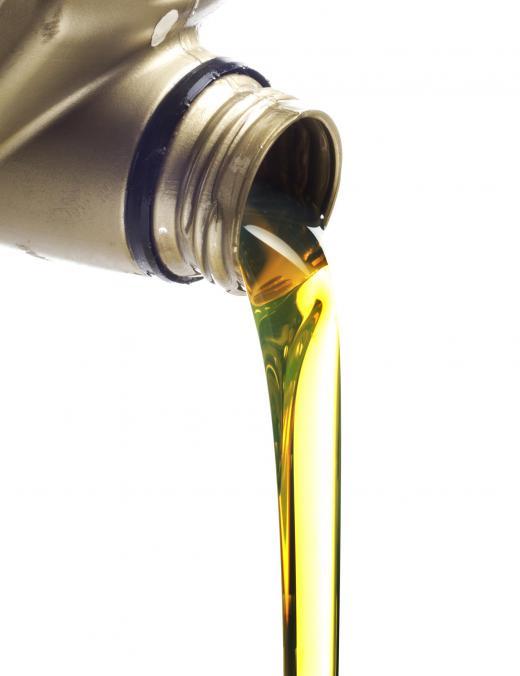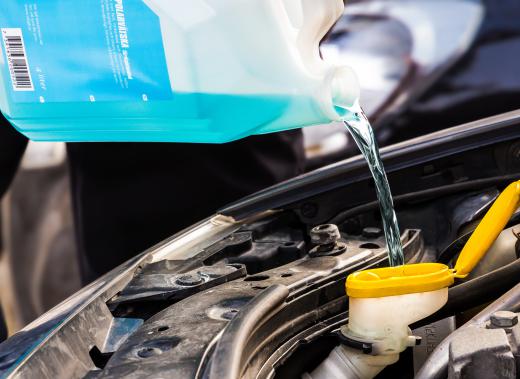What Is a Couplant?
A couplant is a material that serves as a medium for the transmission of sound waves. Usually, couplant gel is a form of water-based substance, or a paste composed of oils or grease-like chemicals. It is placed in physical contact with a transducer that receives audio signals in the air and then coverts them to electrical impulses for transmission. Microphones and sound test equipment use couplant gel or dry couplants to facilitate this.
Ultrasonic testing of materials can also employ complete immersion of the transducer in a couplant-like water, or just a thin film of glycerin or oil between the transducer and medium being studied. Acoustic couplant is important for ultrasonic testing because air is a fairly poor medium for the transmission of sound waves in general as compared to solids. The level of energy that ultrasonic frequencies carry falls off dramatically when transmitted through air, so these materials are meant to minimize this loss.

Many conventional substances can be used as a couplant, including motor oil or even hair gel. This is because even a very thin layer of air between a transducer and sound specimen will have strong attenuation effects, and nearly any solid placed between them will reduce this. Electrical components can generate a lot of heat, however, so specially formulated couplants are designed to accommodate this.

Ultrasonic couplants in the nuclear and medical equipment industry go a step further by requiring materials that are low in halogen or sulfur compounds at less than 50 parts per million (ppm). Propylene glycol, the same material used in automotive antifreeze, is another specialty compound used. It is chemically nonreactive and can withstand temperatures of 200° Fahrenheit (90° Celsius) before undergoing thermal breakdown. Optical couplant fills another unique need. Often referred to as index matching gel, it is used in the splicing of fiber optic cable to minimize variations in the index of refraction that occur where the fibers meet, which can degrade signal transmission.
The main properties looked for in a good couplant material are its acoustic properties, corrosion inhibition, and surface wetting so that it binds well. The length of time it stays wet, known as drying time, is also important, as well as the temperature levels it can endure and its uniformity. A unique aspect of some couplant gel is that it contains a fluorescent tracer dye that glows in the ultraviolet band, which is used to monitor coverage levels.
AS FEATURED ON:
AS FEATURED ON:












Discussion Comments
@Mammmood - I can’t answer your second question, but as to the first question, don’t put hair gel on your microphone! You will most likely ruin it in the process if you do.
A microphone is a porous instrument and the gel will probably get in and damage your sensitive electronics. If you are going to use a couplant of any kind I would recommend getting couplant material for your microphone.
Actually, I’d recommend that you go to a sound studio first and get their professional opinion as to why you’re not getting the sound quality that you want. It may be that you just need an amplifier and that the microphone itself is working just fine.
I have a handheld microphone that is not very good quality. The pickup is weak and the sound is rather staticy.
Am I to understand that if I apply a thin layer of hair gel (one of the couplants mentioned in the article) to the microphone that it will automatically improve the quality of the sound?
Furthermore, if an ultrasonic couplant gel can deliver these kinds of results, why don’t they build the material onto the microphones? The microphone should have a thin layer of gel already layered on top of it, wouldn’t you think?
Post your comments